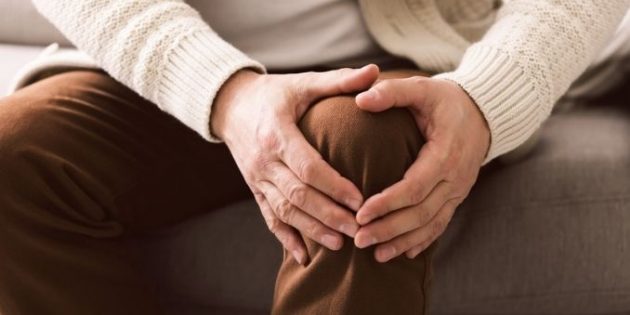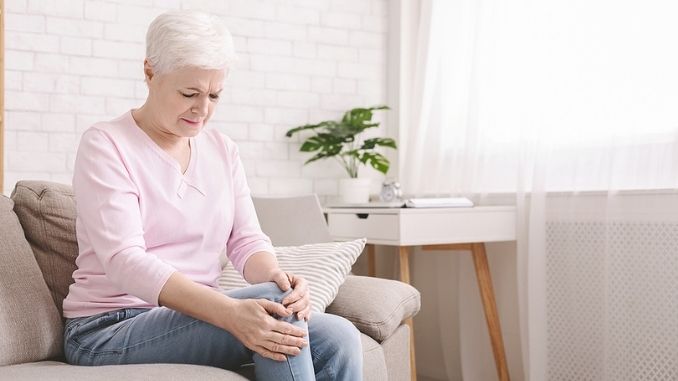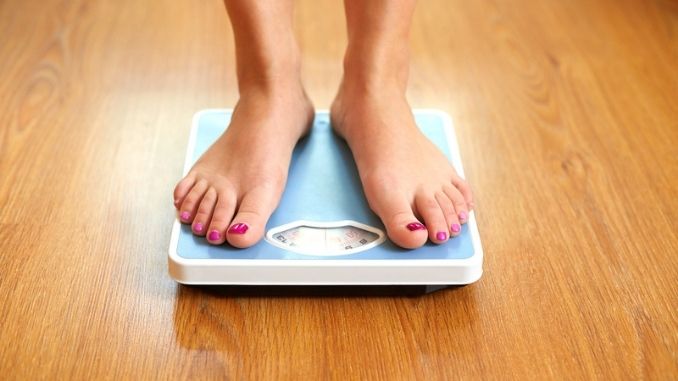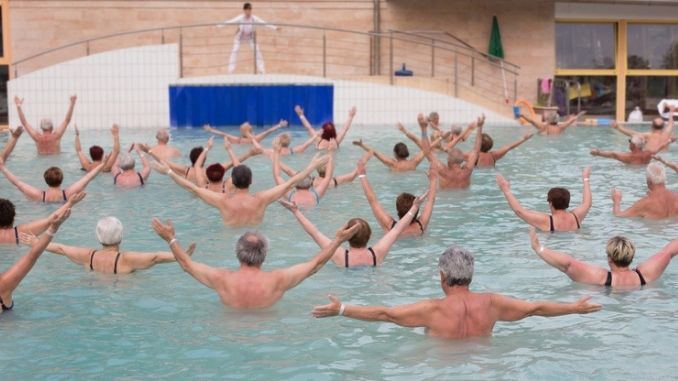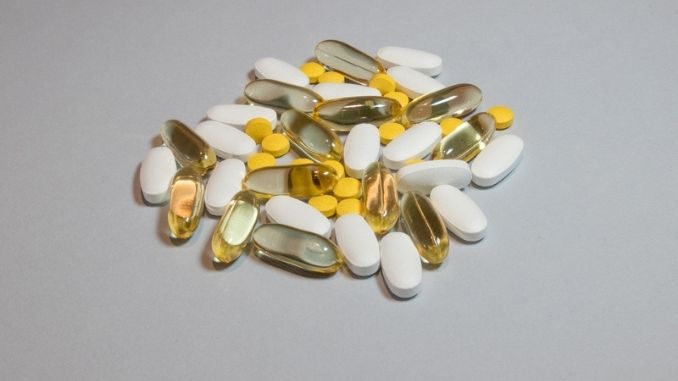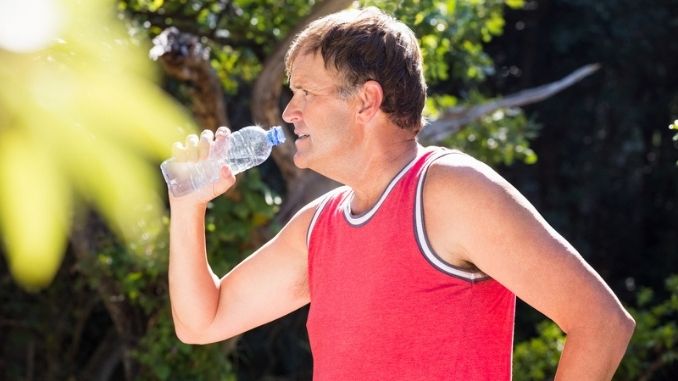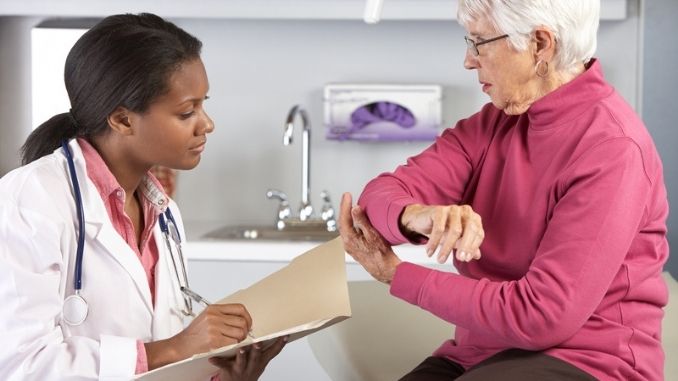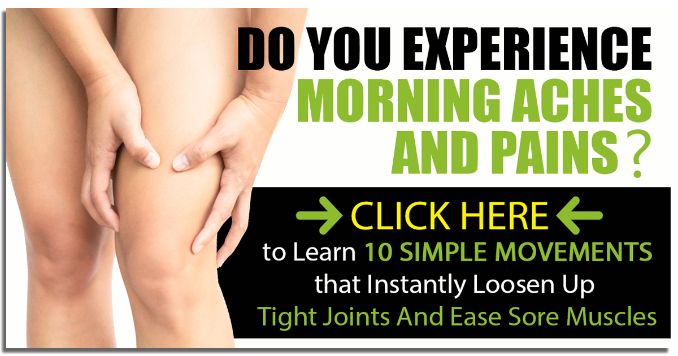Joint pain is a common symptom of aging. As you age, the protective cartilage in your joints begins to break down. However, joint pain is not inevitable with age. There are plenty of treatment options to prevent and treat joint pain, ranging from exercise to alternative supplements, medications, and even surgery. Let’s take a look at why your joints don’t have to hurt as you age.
Arthritis is the most common cause of joint pain as you age. Arthritis is a broad term that refers to inflammation in the joints, but there are many different kinds of arthritis. Osteoarthritis is a degenerative joint disease and is the most common form of arthritis in individuals over 50. With age, the cartilage that normally acts as a shock absorber in the joints becomes stiff and loses its elasticity. The cartilage becomes more susceptible to damage, and as the cartilage wears down, your tendons and ligaments stretch, which causes pain. Osteoarthritis often occurs in the fingers, hips, knees, and spine. Rheumatoid arthritis is very different from osteoarthritis. In this form of arthritis, inflammation occurs on both sides of the body, a symmetry that does not occur with other forms of arthritis. However, both types of arthritis may present similarly, with joint pain and swelling, stiffness, and fatigue. Many other conditions can cause joint pain as you age, but many can be prevented and treated with the same strategies.
While there is no cure for joint pain, there are many ways you can find relief, which we will explore in this article. While these strategies can be used after you experience joint pain, they are also preventative measures to avoid it altogether. Remember, prevention is the best medicine.
1. Weight Loss
Maintaining a healthy weight is essential for many reasons, including joint health. If you are overweight, you increase your risk of joint pain and conditions such as arthritis because there is more stress on your joints that they are unequipped to handle. Your joints are meant to sustain a certain amount of force, and anything more than that can damage your joints. For every 10 pounds you gain above a healthy weight; you add 20 to 39 pounds of force to each knee. Being underweight is also an issue, as you will lack the muscular support to keep your joints strong and stable. Research shows that losing just 11 pounds may cut the risk of osteoarthritis in the knees by 50 percent. The Mediterranean diet is widely recommended for weight loss as it includes a heart-healthy mix of fruits and vegetables, whole grains, and healthy fats. Eating well will nourish not only your joints but your entire body.
2. Exercise
If you have healthy joints, aim for 150 minutes of moderate to vigorous exercise per week in whatever form you like best. If you are currently experiencing joint pain, read on for tips for exercising with painful joints. Exercising might be the last thing you want to do when your joints hurt. This is the vicious cycle that many people find themselves in; your joints ache and prevent you from exercising, and without exercise, your joints weaken further, and your condition worsens. Stopping this cycle is essential for eliminating or decreasing joint pain. If you can, work with a physical therapist to develop an exercise program that is right for you. Physical therapists can give you specific exercises that will be safe and effective for your condition and fitness level. Exercising will improve your strength, endurance, and range of motion in your joints. A physical therapist can also give you exercises designed specifically for joint pain relief.
If you cannot see a physical therapist, here are some recommended exercises for joint pain. If you have access to a pool, swimming, or doing workouts in the water is a great place to start. The buoyancy of the water supports a lot of your body weight, which means you take the stress off your joints and will be able to do exercises that you otherwise couldn’t. Biking, walking, and other low-impact exercises are good for painful joints.
3. Supplements
Though a new science, recent research has shown that supplements such as glucosamine and chondroitin sulfate can relieve pain from osteoarthritis. Glucosamine, in particular, has shown the potential for slowing or even stopping the progression of osteoarthritis. Glucosamine is derived from crustacean shells and is thought to replace missing fluid and increase cartilage growth. Chondroitin sulfate is often taken in conjunction with glucosamine and may help cartilage from breaking down. While both supplements are safe, they take several weeks to months to start working.
4. Quit Smoking
If you smoke, create a plan and find support to quit. Smoking and tobacco are risk factors for many diseases but can also damage your joints. Smoking increases the inflammation throughout your body, which puts you at greater risk for cardiovascular disease and cancer and hampers your body’s ability to recover and heal from injuries.
5. Drink Enough Water
Water makes up about 80 percent of the cartilage in your body, and as discussed, cartilage is what cushions your joints. If you are constantly dehydrated, as many people are, your body will pull water from areas such as your cartilage. This can lead to degeneration of your joints. If you drink soda or energy drinks, try replacing them with water as much as possible to increase your hydration and help deliver better hydration to your joints.
6. Warm Up and Cool Down
You may have gotten away without a warm-up or cool-down at an earlier stage in your life, but warming up your muscles and joints becomes increasingly important with age. Skipping a warm-up can increase the risk of your joints being strained or overloaded. Try warming up and cooling down for just 5 minutes, focusing on the muscles you will use in your workout, but moving them slower. For example, doing a lower body workout and doing dynamic stretches such as leg pendulums or walking lunges. This will also increase blood flow to your working muscles, which reduces the resistance and can increase their flexibility.
7. Listen to Your Body
You have probably felt muscle soreness after a workout, which is usually a normal sign that you had a good workout. Joint pain, on the other hand, is something very different. If you develop joint pain after activities, your body is telling you something is wrong. Your best option is to see your doctor. If it is the early stages of arthritis, starting treatment immediately is the best course of action. Don’t ignore or write off your body’s pain signals.
While joint pain is a common part of aging for many, it doesn’t need to be. You can take many preventative measures every day to keep your joints young and healthy, so you can continue to feel good and participate in your favorite activities. If you are already experiencing joint pain, these strategies can help decrease or even eliminate your pain.
Looking for a natural way to loosen your tight joints and eliminate pain? Click here for more information.
